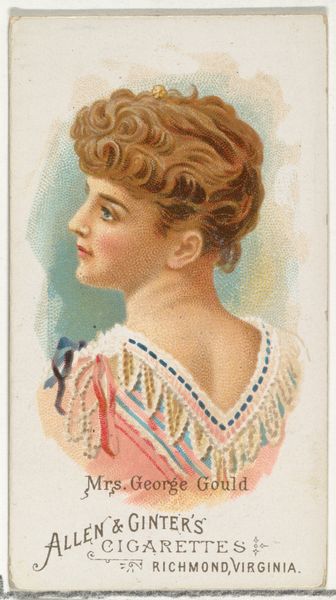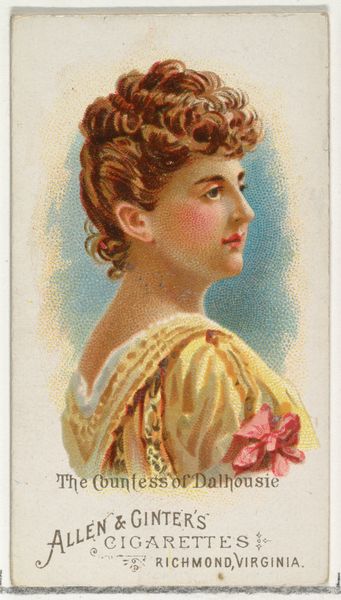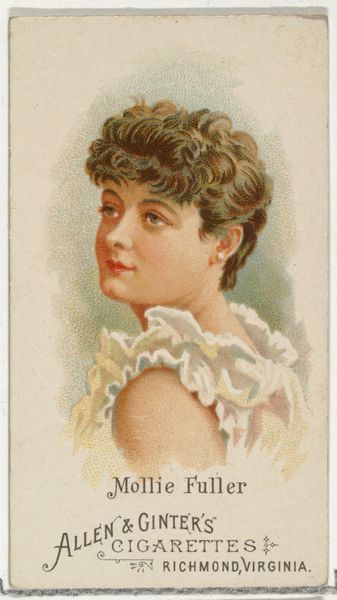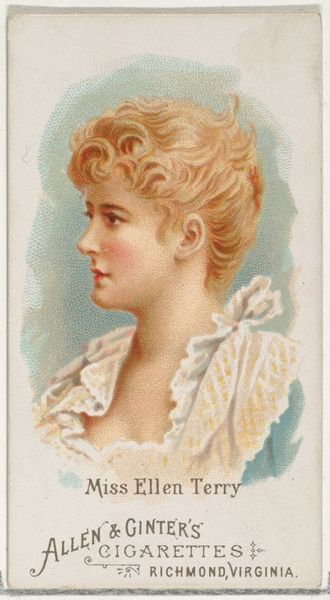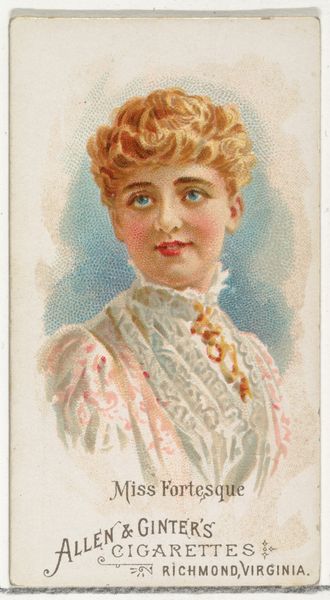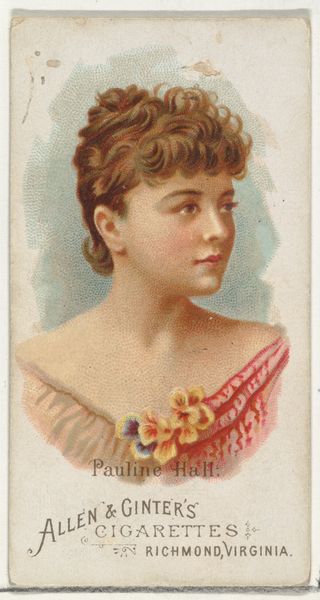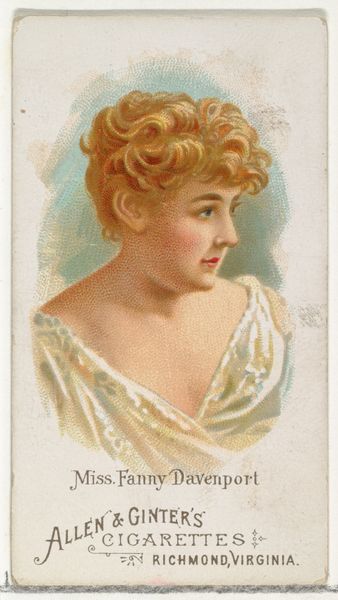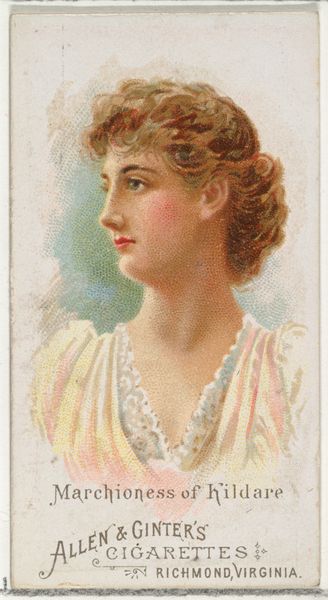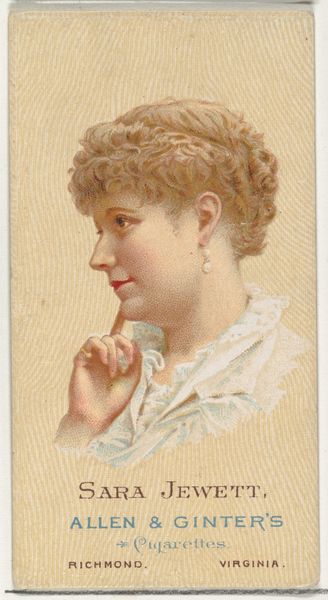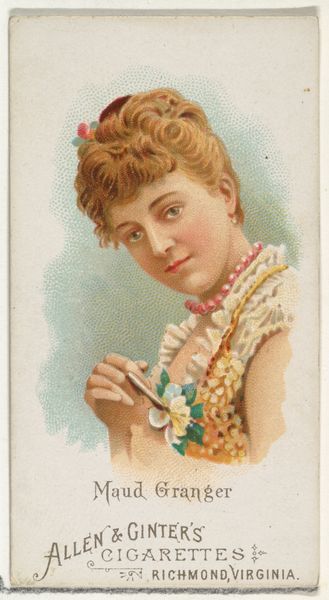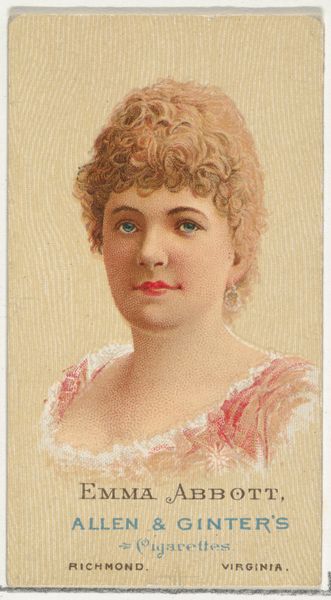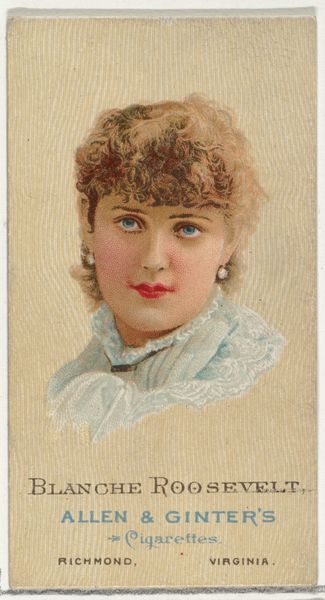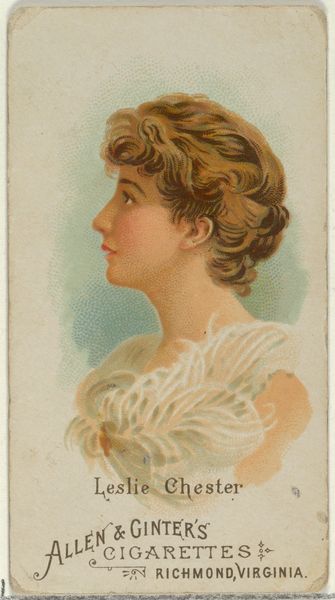
Elsie Loane, from World's Beauties, Series 2 (N27) for Allen & Ginter Cigarettes 1888
0:00
0:00
drawing, coloured-pencil, print
#
portrait
#
drawing
#
coloured-pencil
# print
#
impressionism
#
coloured pencil
#
academic-art
Dimensions: Sheet: 2 3/4 x 1 1/2 in. (7 x 3.8 cm)
Copyright: Public Domain
Editor: This is "Elsie Loane," a coloured-pencil drawing and print from 1888 by Allen & Ginter, part of their "World's Beauties" series, originally made for cigarette cards. What strikes me is the contrast: the delicate rendering of Elsie’s face juxtaposed with the aggressive marketing tactic. What do you see in it? Curator: The very fact it’s on a cigarette card screams volumes. It was a mass-produced object, designed to be discarded. The "beauty" of Elsie Loane is thus inextricably linked to a consumable product, a byproduct of industrial capitalism. Think about the labor involved: the growing of tobacco, the printing, the distribution. And who profits? Not Elsie, certainly not the consumer whose health is compromised. Editor: So, you’re focusing on the means of production and the context of its creation? The image itself almost becomes secondary? Curator: Exactly! Look closer. Coloured pencil and print—techniques easily replicable on an industrial scale. The impressionistic style, which feels almost subversive when put into the context of such commercial endeavor; note the visible layering and hatched lines. It blurs boundaries: high art aesthetics in a disposable commodity. Does that conscious choice critique art history? Editor: That’s fascinating; I hadn't considered it a deliberate move to comment on those higher art ideals within a consumerist space. What’s really changed here in the process? Curator: The original work’s intention for high consumption gets separated across audiences. Now we're looking at this small piece that shows how cigarette advertising made female images consumable, shaping gender roles of the time as objects to possess and discard as one’s desire changes. And the fact that it's in a museum now gives a new role as fine art. Editor: It's really interesting to consider Elsie Loane in terms of labour, commodification, and recontextualization now. I’m not sure I will ever look at these old ads the same way. Curator: Indeed. Hopefully it gave you more to see that initially meet's the eye. Thank you for this discussion!
Comments
No comments
Be the first to comment and join the conversation on the ultimate creative platform.
